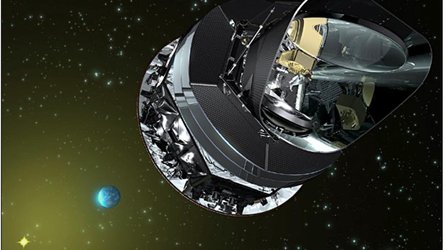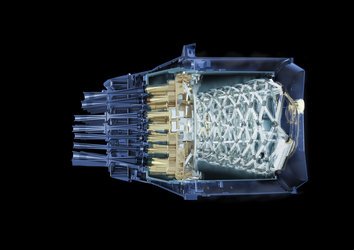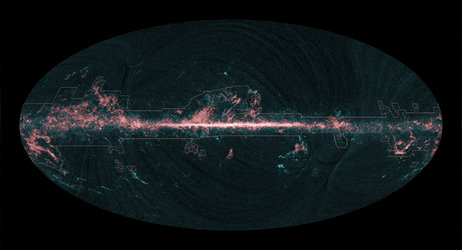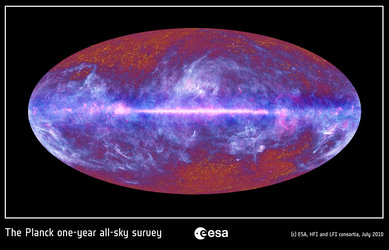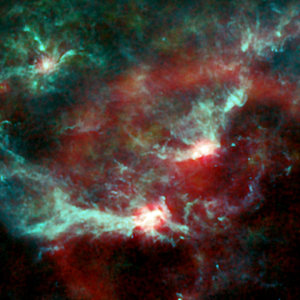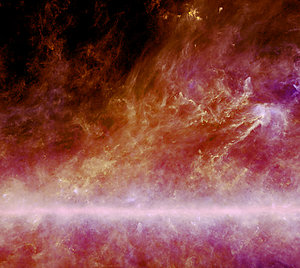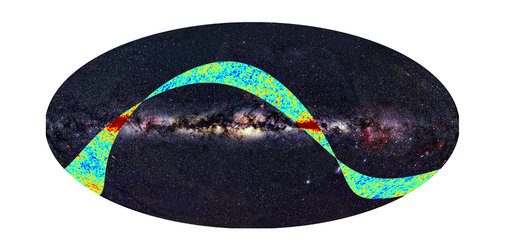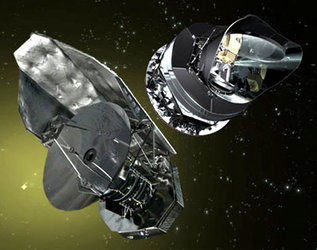Planck’s new view of the cosmic theatre
ESA PR-3 2011 The first scientific results from ESA’s Planck mission were released at a press briefing today in Paris. The findings focus on the coldest objects in the Universe, from within our Galaxy to the distant reaches of space.
If William Shakespeare were an astronomer living today, he might write that “All the Universe is a stage, and all the galaxies merely players.” Planck is bringing us new views of both the stage and players, revealing the drama of the evolution of our Universe.
Following the publication by ESA of the first full-sky Planck image in July last year, today sees the release of the first scientific results from the mission.
These results are being presented by the Planck Collaboration at a major scientific conference in Paris this week, based on 25 papers submitted to the journal Astronomy & Astrophysics.
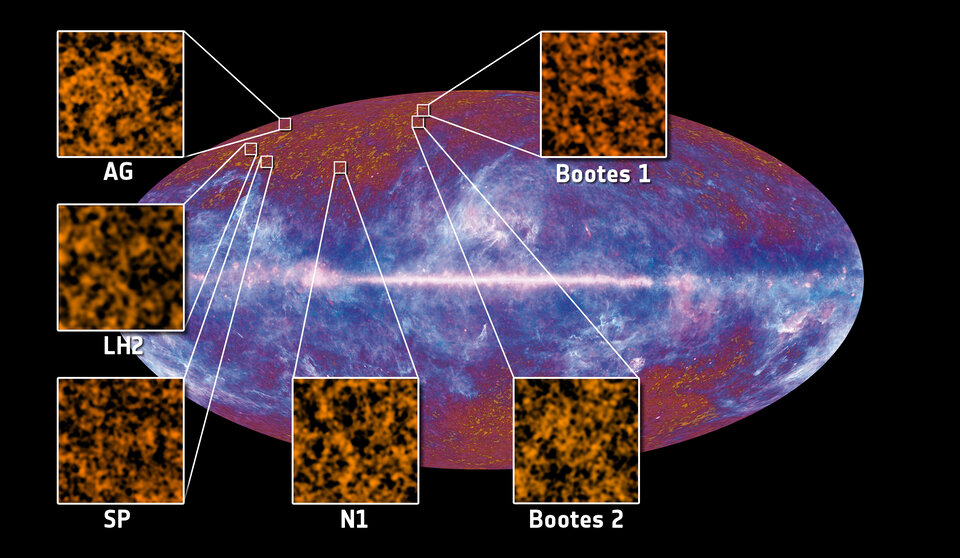
The basis of many of these results is the Planck mission’s ‘Early Release Compact Source Catalogue’, the equivalent of a cast list.
Drawn from Planck’s continuing survey of the entire sky at millimetre and submillimetre wavelengths, the catalogue contains thousands of very cold, individual sources which the scientific community is now free to explore.
“This is a great moment for Planck. Until now, everything has been about collecting data and showing off their potential. Now, at last, we can begin the discoveries,” says Jan Tauber, ESA Project Scientist for Planck.
We can think of the Universe as a stage on which the great cosmic drama plays out over three acts.
Visible-light telescopes see little more than the final act: the tapestry of galaxies around us. But by making measurements at wavelengths between the infrared and radio, Planck is able to work back in time and show us the preceding two acts. The results released today contain important new information about the middle act, when the galaxies were being assembled.
Planck has found evidence for an otherwise invisible population of galaxies shrouded in dust billions of years in the past, which formed stars at rates some 10–1000 times higher than we see in our own Galaxy today. Measurements of this population had never been made at these wavelengths before. “This is a first step, we are just learning how to work with these data and extract the most information,” says Jean-Loup Puget, CNRS-Université Paris Sud, Orsay, France.
Eventually, Planck will show us the best views yet of the Universe’s first act: the formation of the first large-scale structures in the Universe, where the galaxies were later born. These structures are traced by the cosmic microwave background radiation, released just 380 000 years after the Big Bang, as the Universe was cooling.
However, in order to see it properly, contaminating emission from a whole host of foreground sources must first be removed. These include the individual objects contained in the Early Release Compact Source Catalogue, as well as various sources of diffuse emission.
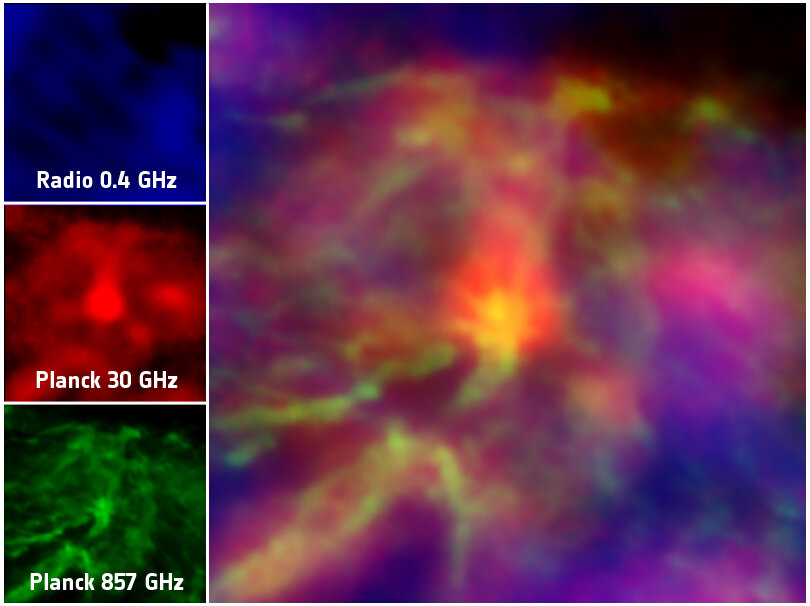
Today, an important step towards removing this contamination was also announced. The ‘anomalous microwave emission’ is a diffuse glow most strongly associated with the dense, dusty regions of our Galaxy, but its origin has been a puzzle for decades.
However, data collected across Planck’s unprecedented wide wavelength range confirm the theory that it is coming from dust grains set spinning at several tens of billion times a second by collisions with either fast-moving atoms or packets of ultraviolet light.
This new understanding helps to remove this local microwave ‘fog’ from the Planck data with greater precision, leaving the cosmic microwave background untouched.
“This is a great result made possible by the exceptional quality of the Planck data,” says Clive Dickinson, University of Manchester, UK.
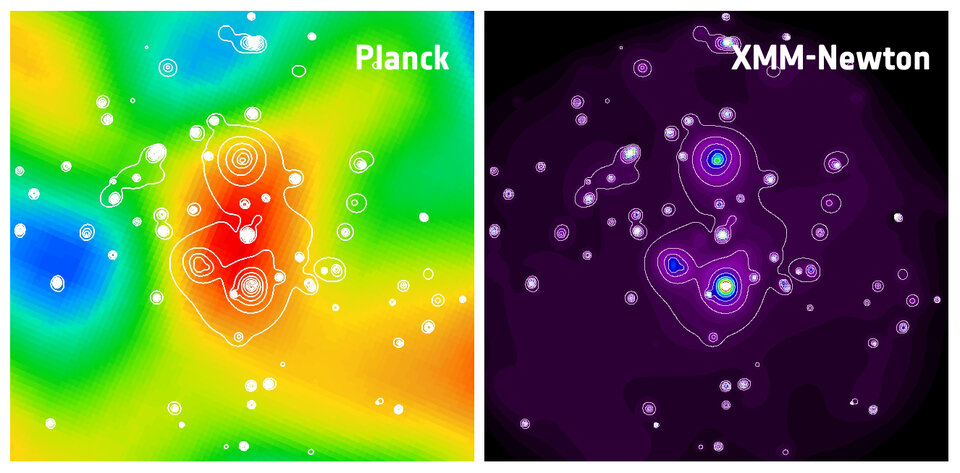
Among the many other results presented today, Planck has shown new details of yet other actors on the cosmic stage: distant clusters of galaxies. These show up in the Planck data as compact silhouettes against the cosmic microwave background.
The Planck Collaboration has identified 189 so far, including 20 previously unknown clusters that are being confirmed by ESA’s XMM-Newton X-ray observatory.
By surveying the whole sky, Planck stands the best chance of finding the most massive examples of these clusters. They are rare and their number is a sensitive probe of the kind of Universe we live in, how fast it is expanding, and how much matter it contains.
“These observations will be used as bricks to build our understanding of the Universe,” says Nabila Aghanim, CNRS-Université Paris Sud, Orsay, France.
“Today’s results are the tip of the scientific iceberg. Planck is exceeding expectations thanks to the dedication of everyone involved in the project,” says David Southwood, ESA Director of Science and Robotic Exploration.
“However, beyond those announced today, this catalogue contains the raw material for many more discoveries. Even then, we haven’t got to the real treasure yet, the cosmic microwave background itself.”
Planck continues to survey the Universe. Its next data release is scheduled for January 2013 and will reveal the cosmic microwave background in unprecedented detail, the opening act of the cosmic drama, a picture of the beginning of everything.




